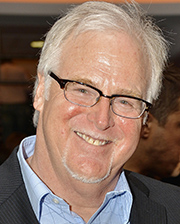
Question: Is that number a) the amount of effort every pro athlete expends for their team or b) the average hourly employee turnover in the foodservice industry every year, according to Dallas-based Black Box Intelligence? The wretched answer is: b). And it’s time we address this crisis head-on before the Gen Z labor pool passes the foodservice industry by like so many silos on a Wisconsin road trip.
110%. Reading that number you either shrug or shiver. If you merely shrug — rationalizing that “that’s the price of doing business” in the foodservice industry — you’re whistling past the graveyard. You shiver if you realize that this rate of employee churn is unsustainable in the near-and-long-term lest the labor side of our business collapses. The fact is we passed the crisis point five years ago and are sliding toward a systemwide breakdown if we don’t address the problem today, and start applying the requisite fixes tomorrow, and the day after that, too.
How is 110% turnover NOT the primary issue in foodservice today? This is an industry that blows a gasket when asked to display sodium content on menus. So where’s the outrage about our chronic employee churn? Where’s the righteous indignation and corrective measures from our industry associations, consultants, C-level suites and concept founders? The silence is deafening.
For years we’ve pretended our turnover numbers were not “that bad,” preferring to rail about commodity prices and government regulation as the primary causes of our shrinking margins. But in our hearts we knew our turnover was a bad sign. By comparison, the retail industry (e.g. Wal-Mart) now suffers 50% turnover, according to The Wall Street Journal, and considers itself in crisis mode as a result. Our industry reacts to 110% annual turnover with a kind of collective nonchalance of a fiddling Nero while Rome burns.
The fact is that we don’t have a “labor” crisis, it’s a turnover crisis. Or probably more accurately, let’s call it a tenure crisis. So where did we go wrong?
If the foodservice industry was a house, it began to outgrow its original footprint some two decades ago. Giddy with growth, we suddenly needed to add on many other rooms and floors to accommodate our success. But instead of buying new materials for the expansion, it’s almost like we decided to rip out the foundation and use it to build the new levels. We only wanted to be taller, quicker. But when you sacrifice the foundation to build new floors the edifice will eventually come crashing down. And in 2016 the foundation cracks are our ever-escalating turnover numbers. The classic business axiom “Develop your action plan before you get into crisis, so you don’t become a prisoner of events” was ignored. We’re now in a cell of our making. If that doesn’t convince you, maybe the numbers will.
Labor costs are typically the second-highest expense in foodservice, until you consider the price of turnover. Industry estimates for hourly team member replacement costs are $5,000 per employee, or 20%-30% of an entry-level salary. So if you employ 50 people and your hourly turnover rate is 100%, you’re generating $250,000 in annual replacement costs PER restaurant. A 25% reduction in turnover saves $62K per restaurant per year and improves service, teamwork and productivity by having a productive and seasoned staff. Constant turnover north of 100% also strains payroll, administration, systems and customer service. Plus, it worsens management turnover since half of their time is spent recruiting, hiring and training new team members instead of driving quality, service and sales.
We recognized the problem fifteen years ago, but we had what seemed like an endless stream of new candidates willing to fill any vacated foodservice job. That stream has slowed to a trickle, and the chickens have come home to roost. Consider this: four of the biggest concerns foodservice operators have today — the $15/hour wage, the impending “labor shortage,” union recruiting and tip elimination — are all direct results of our failure to address the root causes of our turnover issues. Have we gotten to the point where we know the price of everything, but the value of nothing? What do we need to do? A lot.
Here’s a short list of actions:
Make the case at a higher level. This is a top-down, not a bottom-up concern. CEOs must declare war and champion the issue. Make employee turnover a line-item topic at every meeting at every level. Apportion resources to improve hiring, training, development and career-pathing. Most companies are just moving peas on their plate relative to resolving the turnover issue. Here’s a thought: what if we were to elevate the importance of improving turnover to the importance of food safety?
Rise and shine. It’s fairly easy to distinguish “low-road” and “high-road” employers in foodservice. One group focuses only on keeping labor costs down, the other focuses wholly on team development and reaps the rewards of higher productivity. Which one are you? And which ones will win the Talent War in 2016 and beyond? First-rate people hire first-rate people; second-rate people hire third-rate people.
Detail what doesn’t work. Make a list of every reason good team members leave and then put a plan in place work to eliminate those reasons. The short list would include: unfair wages, lack of recognition, no career-path, ineffective supervision, crappy training, bad hiring, no ongoing development and failing to communicate daily how their work matters to the big picture.
Strong Culture. You don’t build business, you build people. People build business. Today you need good employees more than they need you, and the truth is that high-performers choose you, you don’t choose them. Strong culture and leadership attracts them. Make the hiring process like you make everything else: exciting, fun, fast, innovative. Reward managers who attract and retain the best people. Practice random acts of appreciation/recognition.
It’s a marathon not a sprint. It took us twenty years to dig this hole and we won’t fill it back in in a year. The task before us is daunting, but not impossible. Brands like Starbucks, Chipotle, In-N-Out, Chick-fil-A, Shake Shack and Portillo’s have taught us all how to build strong teams by hiring right, developing strong skillsets, promoting clear career paths, and treating people with dignity, care and respect.
How do you hide an 800-lb gorilla? One way is to pretend he doesn’t exist. But that’s not a strategy. If you are truly committed to eliminating the vicious cycle of mediocrity surrounding employee churn, then do something. Patience, persistence, resources and fierce resolve is the only way to will win this battle.

What solutions has your company applied to the turnover/labor crisis? Join the conversation in the comments below.
Jim Sullivan is an operations consultant and keynote speaker at leadership conferences worldwide. The 3rd Edition of his best-selling book Fundamentals has just been published. Learn more at Sullivision.com and follow Jim on YouTube and Twitter @Sullivision.





